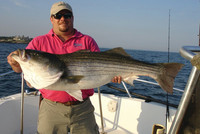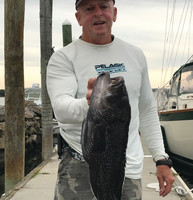

The Rhode Island Department of Environmental Management (DEM) will hold an informational meeting to review Rhode Island’s new monitoring and contingency response plan for harmful algae blooms (HAB). The meeting will take place Tuesday, Sept. 12 at 5 p.m. in the Hazard Room, URI Coastal Institute Building on South Ferry Road, Narragansett.
Last year, Rhode Island experienced its first HAB caused by the presence of toxic phytoplankton in local waters; the event triggered an emergency closure of the state’s shellfishing areas. A subsequent bloom earlier this year resulted in a second emergency closure of some waters.
As part of the workshop, officials will review routine monitoring efforts for phytoplankton in the state’s waters, as well as new emergency protocols in the case a HAB is detected. Along with its partners, DEM successfully managed the earlier HAB events, ensuring all local shellfish products on the market remained safe. During the emergency closures, partners worked swiftly to collect and test over 190 water and shellfish samples for harmful algae and domoic acid, a toxin responsible for amnesic shellfish poisoning in humans.
Waters were reopened when all samples tested below levels of concern. In the wake of these events, DEM worked with its partners to update the state’s Harmful Algae Bloom and Shellfish Biotoxin Monitoring and Contingency Plan, which will be reviewed during next month’s workshop.
The plan in its entirety can be viewed at www.dem.ri.gov/shellfish.
$3 million in grant
funding for recreational areas
The Rhode Island DEM announced the availability of $3 million in matching grants to help local communities invest in recreational spaces. The grants will be funded by the $35 million Green Economy Bond, approved by voters last year. The grant application period is open through Dec. 1, 2017.
Community recreation grant funding – with a maximum of $100,000 for small grants and $300,000 for large grants – requires a 20 percent community match for development projects and a 50 percent match for acquisitions.
Grant awards will be announced in spring 2018. For more information or to apply, visit www.dem.ri.gov/plangrants.
What’s fishing the wash?
Fishing the wash is when you fish close to the rocks and crashing waves as you cast into the white water. It is very, very dangerous, but can pay off with striped bass and bluefish that chase bait being tossed around by the crashing waves. Capt. Eric Thomas of Teezer Fishing Charters made it very clear how dangerous ‘Fishing the Wash’ can be at a presentation last week at a R.I. Saltwater Anglers Association seminar.
Capt. Thomas said, “You need to learn how to handle the waves, as the last thing you want is to get hit broad side by a wave and it brings your boat up, out of the water and onto the rocks.” Other key factors to consider include watching and observing the spot you want to fish for a long time. Thomas said, “Sometimes I just watch from a distance for as long as 10 minutes to see the direction, location and size of the breaking waves and where we have to be to fish that spot. If I can’t find escape routes or have to go too close to reach the white water with a cast, I will not fish the spot.”
“You have the rocks, white foam around them, a light green sea foam and then dark green, which usually signifies you are in deeper water. I check all this out, use my instruments (depth finder) too, and if conditions are right, I will only place my boat in the dark green colored area. When I come close to the light green foam, we move the boat.”
“Position your vessel up wind or into the wind, so if you hook a fish you can drop back and blow off the spot away from the structure and not worry about going onto the rocks.”
Thomas uses fly fishing, as well as spinning gear, to fish wash areas. If using a fly, it is large and bright colored to attract fish in the foam. With spinning gear, he likes to throw soft plastics that can sink if the fish are down or use surface or swimming lures if they are on or just below the surface. Customers target the white foam areas while he is (always) at the helm. “You can’t be piloting the boat and fishing the foam at the same time. You need a dedicated person at the helm at all times. If not, you are asking for trouble.”
Visit Capt. Eric Thomas’ website at www.teezer77.com.
Where’s the bite?
Striped bass and bluefish. “The striped bass bite is excellent for boats, but has slowed a bit from shore. It’s spotty. Last night (Sunday), shore fishermen did well with bass from the breachway using plugs and eels,” said Mike Cardinal of Misquamicut Bait & Tackle, Westerly. I spoke with Capt. Randy Bagwell of Rebel Charters when at Lucky Bait in Warren. Capt. Bagwell said, “Block Island has been hit or miss for bass. We were out there last week and did not hook up, but were going to give it another try today (Monday), but cancelled the trip due to high seas. There seemed to be bluefish out there, but did not see anyone hooking up with striped bass. Some nice bass have been caught off Newport with Capt. BJ Silvia of Flippin’ Out Charters landing some nice fish off Newport this week.” Matt Conti of Snug Harbor Marine, South Kingstown, said last week “we are in a transition period, everything is still three weeks late this season. It’s like it is the end of the summer, so the hope is we will get into a fall migration pattern with the bass once the weather settles down a bit.” The bluefish bite from the Sakonnet River to Beavertail has been very good this past week, with bluefish often surfacing in schools trapping bait on the surface in a feeding frenzy.
Summer flounder (fluke) and black sea bass. “The fluke bite has slowed along the southern coastal shore,” said Mike Cardinal of Misquamicut Bait & Tackle. Capt. Randy Bagwell said, “We had no trouble hitting our limit of seven black sea bass at Block Island (sea bass went to seven fish/angler/day on Sept. 1). Customers were amazed at how plentiful they were. Once I started to clean them, you could see they were all filled with sand eels and small lobsters. The fluke fishing was not good at the Island the day we were there.” Black sea bass fishing was also good at Cox’s Ledge. Anglers Jack Leyden of North Kingstown and Steve Sears of Seekonk had no trouble hooking up with black sea bass as they fished for cod at the Ledge. Capt. Frank Blount of the Frances Fleet said, “The full day fluke/sea bass trips were outstanding Monday and Saturday this past week. Both trips saw lots of angler limits of both fluke and sea bass, and both trips saw a lot of quality fluke over five pounds, and on Saturday, two fish in the 10-pound range fought it out for bragging rights. Saturday’s run was also punctuated by an extreme amount of sand eels causing the sea bass to be stacked up 20-30-feet thick.”
Scup fishing is good. Mike Cardinal of Misquamicut Bait & tackle said, “Anglers are doing well with porgies from the Quonnie Breachway. I fished for scup twice last week with 4-, 7- and 9-year-old children on board, and they all did well with scup to 15 inches in lower Narragansett Bay along the western side of Jamestown.
Cod fishing at Cox’s Ledge was good last week, with anglers finding the cod are boating fish to 20 pounds and are not having trouble reaching their seven fish limit of black sea bass.
“Offshore fishing was very good last week until the wind prevented some anglers from fishing offshore. The northwest corner of the Dump was good with anglers catching bluefin (50-pound range) trolling as well as jigging. Some mako sharks were caught too,” said Matt Conti of Snug Harbor.
Captain Dave Monti has been fishing and shell fishing for over 40 years. He holds a captain’s master license and a charter fishing license. He is a RISAA board member, a member of the RI Party & Charter Boat Association and a member of the RI Marine Fisheries Council. Contact or forward fishing news and photos to Capt. Dave at dmontifish@verizon.net or visit his website at www.noflukefishing.com.
Comments
No comments on this item Please log in to comment by clicking here